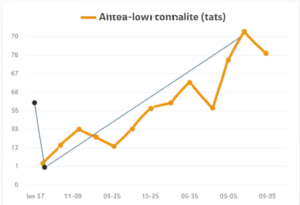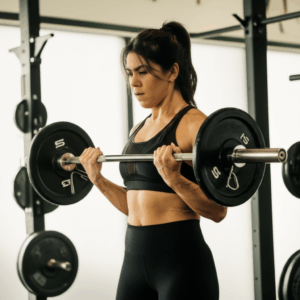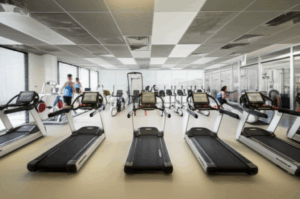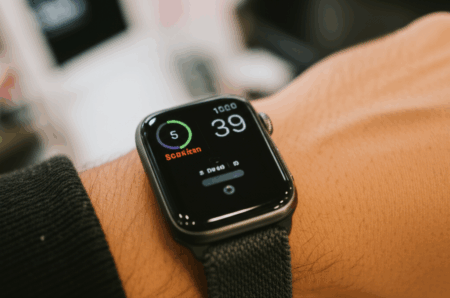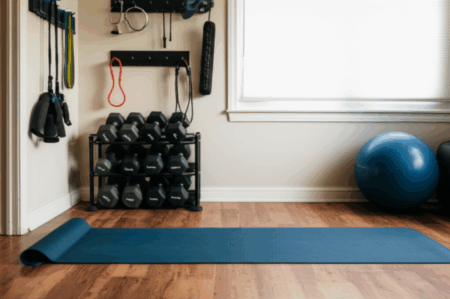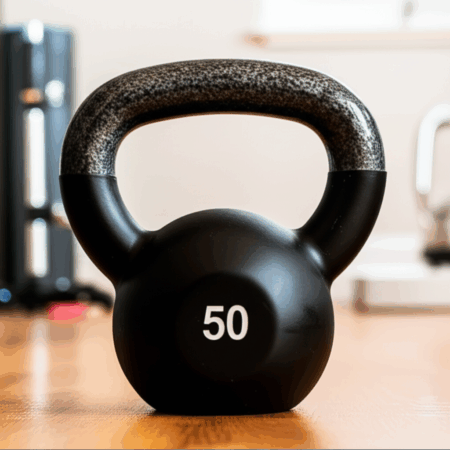Cycling has always been about pushing limits, but modern technology is transforming how cyclists train and perform. The cycling power meter market is experiencing a surge, driven by increased fitness awareness and technological advancements. This article delves into the world of cycling power meters, exploring their evolution, benefits, types, and the latest trends shaping the market.
What is a Cycling Power Meter?
A cycling power meter is a device mounted on a bicycle to measure a cyclist’s power output in watts. Unlike other metrics like heart rate or speed, power is a direct measure of the work being done, providing accurate and reliable insights into performance. This data helps cyclists train with precision, analyze performance, and develop effective race strategies.
The Evolution of Cycling Power Meters
The development of power meters began several decades ago, gaining traction in the late 1980s and early 1990s. Early models were cumbersome and required extensive calibration, limiting their practicality. However, advancements in sensor technology and wireless communication have led to the creation of compact, accurate, and user-friendly power meters.
Benefits of Using Cycling Power Meters
Cycling power meters have revolutionized training methodologies, offering several key benefits:
- Precision Training: Power meters provide real-time data on power output, enabling cyclists and coaches to tailor training programs effectively. Workouts can be designed to target specific power zones and training objectives.
- Performance Analysis: Post-ride analysis of power meter data provides insights into performance metrics like power distribution, cadence, and efficiency, helping identify strengths and weaknesses.
- Improved Pacing: Power meters help cyclists maintain consistent power output during training and races, preventing premature fatigue and optimizing performance.
- Objective Measurement: Unlike subjective metrics like perceived exertion or heart rate, power meters offer an objective measure of effort, allowing cyclists to monitor progress accurately and set achievable goals.
- Race Strategy: In competitive cycling, power meters are invaluable for developing race strategies, helping cyclists pace themselves, monitor efforts during breakaways, and optimize tactics based on real-time power data.
Types of Cycling Power Meters
Power meters come in various designs, each utilizing different technologies to measure power output:
- Strain Gauge-Based Power Meters: These measure deflection in strain gauges attached to key components like crank arms or pedals. The deformation is translated into power output.
- Power Meter Pedals: These integrate sensors within the pedal spindle to measure force and cadence, offering easy installation and compatibility with multiple bike setups. Popular models include Favero Assioma Duo and Garmin Rally RK200.
- Hub-Based Power Meters: Built into the rear wheel hub, these measure power directly at the point where force is applied. While highly accurate, they require wheel-specific setups.
- Crank-Based Power Meters: Integrated into the crankset, either within the crank arms or the chainrings, these provide accurate measurements and are popular due to their compatibility with various bike setups.
- Spider-Based Power Meters: Located in the spider of the crankset, these measure the total power output from both legs, offering a comprehensive view of a cyclist’s performance.
Key Market Trends
Several trends are shaping the cycling power meter market:
- Rising Demand for Performance Monitoring: Cyclists seek tools to optimize their performance and achieve better results.
- Technological Advancements: Innovations in sensors, wireless connectivity, and data analytics enhance accuracy and user experience.
- Growth of Virtual Training: Power meters enable cyclists to train indoors effectively using virtual reality tools like Zwift and TrainerRoad.
- Increasing Popularity of Cycling: The rising popularity of cycling as a recreational and fitness activity fuels the demand for power meters.
- Integration with Fitness Apps: Power meters connect to fitness apps, enabling seamless data sharing and performance tracking.
- Smart Power Meters: Advanced models offer features like automatic calibration and real-time data transmission.
- AI and Machine Learning: AI-powered algorithms analyze power data, providing insights and personalized training recommendations.
- Wireless Data Transmission: Modern power meters use ANT+ and Bluetooth for real-time data transmission to cycling computers and smartphones, enhancing user experience.
The Market Landscape
The global bicycle power meter market is experiencing significant growth. It was valued at approximately USD 468.8 million in 2025 and is projected to reach USD 679.0 million by 2035, growing at a CAGR of 4.2% during the forecast period. This growth is driven by the increasing popularity of cycling, growing awareness of the benefits of power meters, and technological advancements.
Key players in the market include:
- Stages Cycling
- 4iiii
- Assioma
- Garmin
- SRM
- Quarq
- Power2max
- Rotor
The market is highly competitive, with each company offering unique features and benefits. The market is also fragmented, with a large number of small and medium-sized companies operating in it.
Regional Market Trends
- North America: Expected to hold a significant market share due to an established cycling community, high participation in competitive events, and increased focus on fitness technologies.
- Asia-Pacific: A fast-growing market due to rising disposable income, increasing affinity for cycling as a sport and leisure activity, and growing awareness of fitness technologies. Countries like China, Japan, and Australia are seeing increased spending on performance-based tracking devices.
Challenges and Opportunities
Despite the positive outlook, the cycling power meter market faces challenges:
- High Costs: The high cost of power meters can deter casual cyclists or those new to the sport.
- Compatibility Issues: Variability in data accuracy and compatibility issues with existing cycling setups can act as barriers.
To capitalize on opportunities, manufacturers can focus on:
- Developing Affordable Models: Creating cost-effective models to broaden market access.
- Enhancing Connectivity: Improving connectivity features for seamless integration with cycling apps and platforms.
- Improving Accuracy: Researching novel sensor technologies and materials for more accurate and lightweight meters.
- Partnerships: Collaborating with fitness platforms for integrated health monitoring solutions.
Power Meters vs. Heart Rate Monitors
While heart rate monitors have been a staple in cycling training, power meters offer distinct advantages. Power meters provide instantaneous feedback on riding intensity, while heart rate monitors have a significant lag. This is particularly important for shorter intervals and punchier rides where heart rate doesn’t react quickly enough.
However, heart rate monitors still have value. A power meter tells you what output your body is producing, while a heart rate monitor shows the impact on your body. By understanding the relationship between the two, cyclists can gain real insight into the effect of their training.
Choosing the Right Power Meter
Selecting the right power meter depends on individual needs and preferences. Factors to consider include:
- Type of Cycling: Road, mountain, gravel, or track cycling may require different types of power meters.
- Budget: Power meters range in price, so it’s essential to set a budget and find a model that fits.
- Compatibility: Ensure the power meter is compatible with your bike and cycling computer.
- Accuracy: Look for power meters with high accuracy ratings to ensure reliable data.
- Ease of Use: Consider how easy the power meter is to install, calibrate, and use.
How to Train with a Power Meter
Training with a power meter involves several key steps:
- Determine Your Functional Threshold Power (FTP): FTP is the maximum power you can sustain for one hour. It serves as the foundation for setting training zones.
- Set Training Zones: Based on your FTP, establish specific training zones for different types of workouts, such as endurance, tempo, and interval training.
- Follow a Training Plan: Use a structured training plan that incorporates power-based workouts to achieve specific fitness goals.
- Analyze Your Data: After each ride, analyze your power data to identify areas for improvement and track progress over time.
- Calibrate Regularly: Calibrate your power meter before each workout to ensure consistent readings and accurate data.
Common Mistakes to Avoid
- Not Testing FTP Regularly: Regularly testing your FTP ensures your workouts are calibrated to your current fitness level.
- Ignoring Data: Failing to analyze power data can lead to missed opportunities for improvement.
- Over-reliance on Power Data: It’s essential to consider other factors like heart rate and perceived exertion alongside power data.
- Not Calibrating: Neglecting to calibrate your power meter can result in inaccurate data and ineffective training.
The Future of Cycling Power Meters
The future of cycling power meters is bright, with ongoing advancements in technology and increasing adoption among cyclists of all levels. Expect to see:
- More Affordable Options: As technology advances, power meters will become more accessible to a wider range of cyclists.
- Improved Accuracy: Continued innovation in sensor technology will lead to even more accurate power measurements.
- Enhanced Connectivity: Seamless integration with cycling computers, smartphones, and fitness apps will become the norm.
- AI-Powered Insights: AI algorithms will provide personalized training recommendations based on power data, helping cyclists optimize their performance.
- Expanded Compatibility: Power meters will be compatible with a wider range of bike types and components.
Cycling with a power meter is a game-changer for training, offering precise data to help you track performance and optimize your efforts. By incorporating power-based training, you can improve endurance, pacing, and overall efficiency. Whether you’re aiming to enhance your race results or refine your training, a power meter is an invaluable tool for cyclists of all levels. Good luck with your training, and enjoy the ride!

